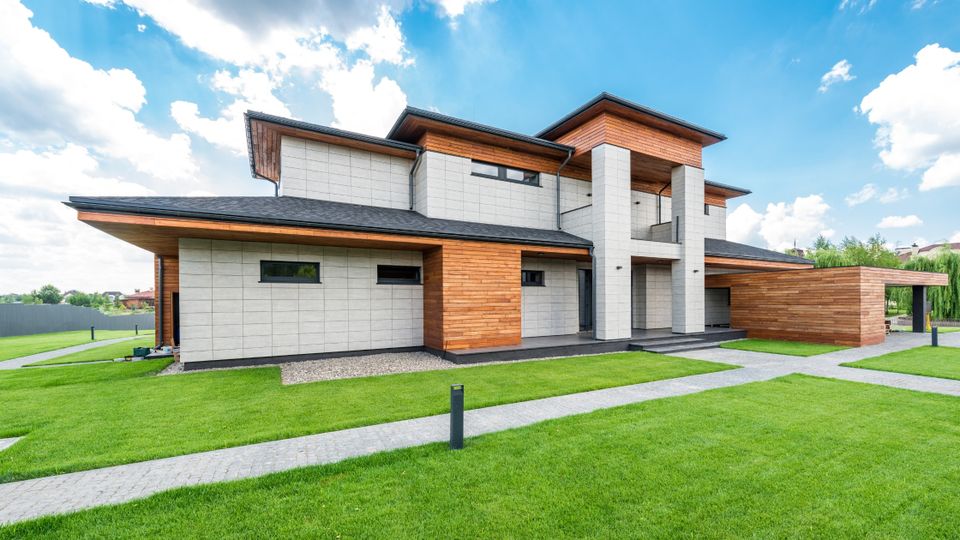

When it comes to selecting a roof, the options can feel endless. With so many types of roof materials available, understanding their unique qualities is key to making the right decision for your home or business. Whether you're choosing a new roof for its durability, aesthetic appeal, or energy efficiency, each material offers its own set of benefits. This guide breaks down the types of roofing materials, helping you balance style and function to make an informed choice.
Why Picking the Right Roofing Material Matters
Your roof is much more than a cover for your home. It impacts energy costs, curb appeal, and how well your home handles extreme weather. The roofing material you choose can enhance the durability and the appearance of your home while adding long-term value. For instance, did you know some roofing materials can withstand harsh weather conditions better than others? Let's explore the options to find the perfect fit.
Popular Types of Roof Materials
1. Asphalt Shingles: A Popular Roofing Choice
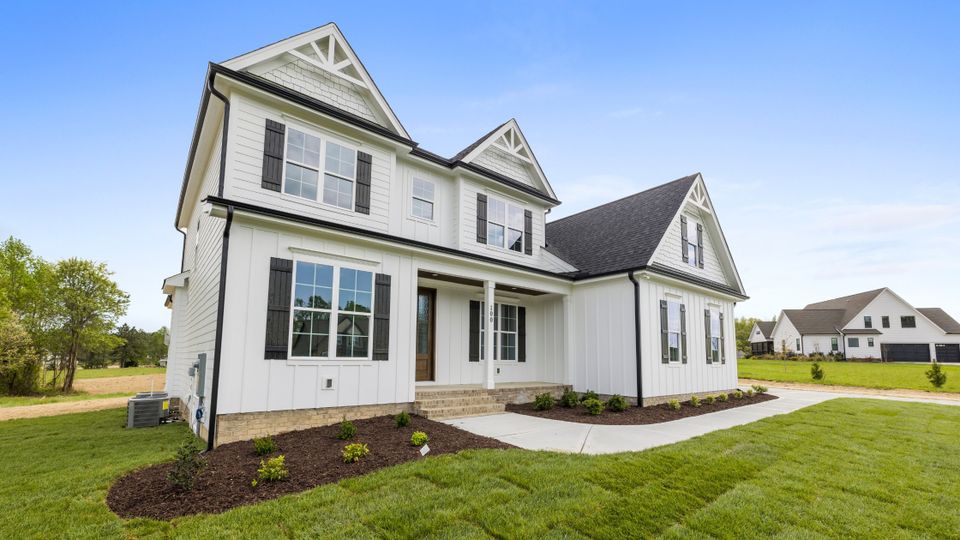
Asphalt shingles are one of the most widely used and affordable roofing materials in America. Known for their versatility, ease of installation, and cost-effectiveness, asphalt shingles have become a go-to option for many homeowners. They are available in a wide range of colors, textures, and styles, allowing homeowners to customize their roofs to complement the overall look of their homes.
Homeowners often prefer traditional asphalt shingles because they provide a balance between affordability and performance. Whether you're looking to achieve a classic aesthetic or a more modern design, asphalt shingles can cater to various preferences without breaking the bank.
Asphalt shingles are also less environmentally friendly than some alternatives, as they are petroleum-based and can be difficult to recycle. However, manufacturers are starting to produce more eco-conscious asphalt shingles, which can be a great option for sustainability-focused homeowners.
Quick tip: If you're working within a budget, architectural asphalt shingles offer a more premium look at a slightly higher cost compared to traditional shingles.
Homeowners often prefer traditional asphalt shingles because they provide a balance between affordability and performance. Whether you're looking to achieve a classic aesthetic or a more modern design, asphalt shingles can cater to various preferences without breaking the bank.
Benefits of Asphalt Shingles
- Affordability: Asphalt shingles are cost-effective compared to other roofing materials, making them accessible for most homeowners.
- Availability: Widely available across the country, they can be sourced easily from local suppliers.
- Ease of Installation: Roofing contractors favor this material because it is lightweight and straightforward to install, reducing labor costs.
- Repair and Replacement: Asphalt shingles are simple to repair or replace if damaged, unlike more complex roofing materials such as slate or tile.
- Durability: Although not the longest-lasting material, asphalt shingles still offer solid durability for their price point, lasting 15–30 years, depending on maintenance.
- Fire Resistance: Many asphalt shingles come with Class A fire ratings, which is the highest level of fire resistance you can get in roofing materials.
- Energy Efficiency: Some options come with reflective coatings designed to improve energy efficiency by keeping homes cooler in hot climates.
Considerations for Asphalt Shingles
While asphalt shingles offer numerous benefits, they do have some limitations. Their lifespan is shorter than premium materials like metal, clay tiles, or slate, typically lasting 15–30 years depending on weather conditions and maintenance. In areas prone to extreme temperatures or severe weather, such as hurricanes or hailstorms, shingles may wear out faster than more robust materials.Asphalt shingles are also less environmentally friendly than some alternatives, as they are petroleum-based and can be difficult to recycle. However, manufacturers are starting to produce more eco-conscious asphalt shingles, which can be a great option for sustainability-focused homeowners.
Why Choose Asphalt Shingles?
If you're looking for a roofing material that combines simplicity, utility, and aesthetic appeal, asphalt shingles are an excellent choice. They are ideal for homeowners who want a reliable and attractive roof without overspending. With advancements in technology, modern asphalt shingles offer improved durability, better energy efficiency, and a wide range of design options, making them one of the most practical roofing solutions available today.Quick tip: If you're working within a budget, architectural asphalt shingles offer a more premium look at a slightly higher cost compared to traditional shingles.
2. Metal Roofs: A Durable and Modern Roofing Option.

Metal roofs are becoming an increasingly popular choice for homeowners and businesses alike, thanks to their exceptional durability, energy efficiency, and sleek, modern appearance. Whether you opt for standing seam metal roofing or metal roofing shingles, these materials are built to withstand harsh weather conditions while adding a contemporary aesthetic to any building.
What Makes Metal Roofs Unique?
Standing seam metal roofing is specially engineered to channel water and snow off the roof efficiently, making it an excellent choice for regions that experience heavy rainfall or snowfall. Its design uses vertical seams with concealed fasteners, providing both enhanced durability and a clean, streamlined look. Metal roofing shingles, on the other hand, mimic the appearance of traditional roofing materials like wood, slate, or tile while offering superior strength and weather resistance.Key Benefits of Metal Roofs
- Longevity: Metal roofs can last up to 50 years or more, far outlasting traditional asphalt roofs.
- Energy Efficiency: Highly reflective surfaces help reduce heat absorption, making metal roofs an energy-efficient option that can lower cooling costs in hotter climates.
- Low Maintenance: Unlike other materials, metal roofing requires minimal upkeep, saving time and money over its lifespan.
- Weather Resistance: Metal roofs are designed to handle extreme weather, from heavy snow and rain to strong winds and hail.
- Versatility: Available in a variety of colors, finishes, and styles, metal roofs can complement a wide range of architectural designs.
Cost Considerations
While metal roofs typically come with a higher upfront cost than asphalt roofs, their long lifespan and minimal maintenance requirements can make them a more cost-effective choice over time. Additionally, energy savings from reduced cooling costs and potential insurance discounts for their durability often offset the initial investment.Customization and Aesthetic Appeal
One of the greatest advantages of metal roofing is its versatility. It’s available in a wide array of colors, textures, and finishes, allowing homeowners to achieve a unique and customized look for their property. From matte finishes to vibrant colors or even textured patterns that mimic wood or slate, metal roofs can elevate a home’s curb appeal while maintaining their functional benefits.Is a Metal Roof Right for You?
If you live in an area prone to severe weather or simply want a long-lasting, energy-efficient roofing option, a metal roof could be an ideal investment. Its combination of durability, style, and performance makes it a standout choice for modern roofing needs.3. Clay Tiles: A Timeless Roofing Option
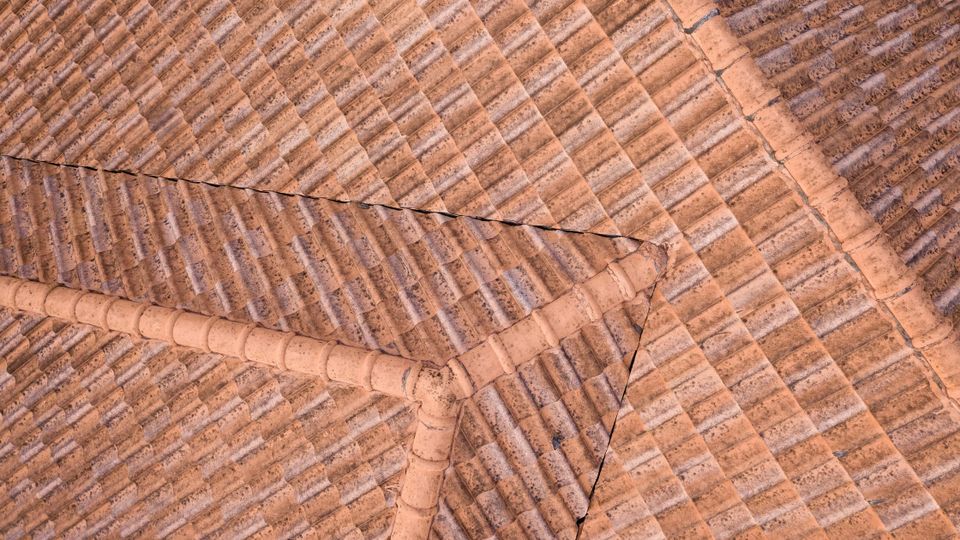
Few roofing materials bring as much character, charm, and timeless appeal as clay tile roofing. Known for their Mediterranean-inspired aesthetic, clay tiles are an excellent choice for homeowners seeking a blend of beauty and functionality, particularly in hot climates. These tiles have been used for centuries, proving their value and reliability time and again.
Additionally, clay tiles fall into the category of premium or expensive roofing materials. Their upfront cost can be higher than other options like asphalt shingles or metal roofing. However, their longevity and minimal maintenance requirements often make them a cost-effective choice over time.
If you’re looking for a roofing material that combines timeless beauty, exceptional durability, and energy efficiency, clay tiles are a worthy consideration. While they may require a higher initial investment, the benefits they provide make them one of the most reliable and attractive roofing options available.
Benefits of Clay Tiles
Clay tiles offer a range of benefits that make them a popular roofing option:- Durability: Clay tiles are incredibly long-lasting and resistant to pests, rot, and fire. With proper installation and maintenance, they can last 50 years or more.
- Natural Thermal Insulation: These tiles help regulate indoor temperatures by providing natural thermal insulation, keeping homes cooler in the summer and warmer in the winter. This makes them ideal for regions with hot climates or significant temperature fluctuations.
- Weather Resistance: Clay tiles are designed to withstand harsh weather conditions, including strong winds, heavy rain, and even hail. Their robust structure makes them suitable for areas prone to extreme weather.
- Low Maintenance: Once installed, clay tiles require minimal upkeep, saving you time and costs in the long run.
Considerations for Clay Tiles
While their benefits are impressive, clay tiles come with certain considerations. Their weight, for example, requires a sturdy roofing structure to support them. If your home’s roof isn’t already reinforced, additional work may be needed to ensure the structural integrity of your property.Additionally, clay tiles fall into the category of premium or expensive roofing materials. Their upfront cost can be higher than other options like asphalt shingles or metal roofing. However, their longevity and minimal maintenance requirements often make them a cost-effective choice over time.
The Aesthetic and Functional Appeal of Clay Tiles
Beyond their practical benefits, clay tiles add a touch of elegance that is hard to match. Their distinct, earthy tones and textures can transform the look of any home, bringing a classic and sophisticated feel. Homeowners who prioritize curb appeal often find clay tile roofing to be an ideal option due to its ability to enhance a property’s aesthetic value. They’re particularly well-suited for Mediterranean, Spanish, and Southwestern-style homes, but their versatility allows them to complement other architectural styles as well.If you’re looking for a roofing material that combines timeless beauty, exceptional durability, and energy efficiency, clay tiles are a worthy consideration. While they may require a higher initial investment, the benefits they provide make them one of the most reliable and attractive roofing options available.
4. Concrete Tiles: A Durable and Versatile Roofing Option
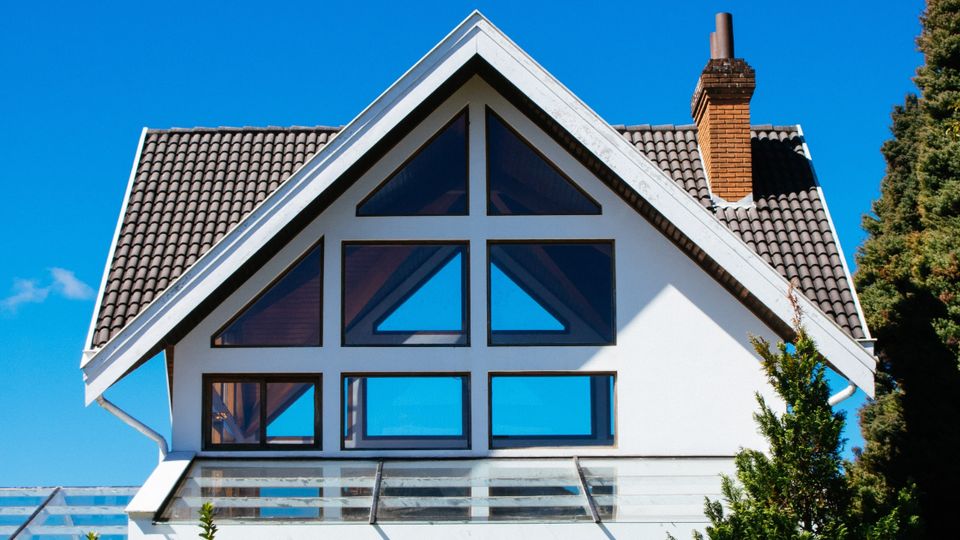
Concrete tiles are a popular choice for homeowners seeking both durability and design flexibility. Similar to clay tiles, concrete tiles offer exceptional strength and long-lasting performance. However, concrete tiles stand out by providing more design versatility and often come at a slightly lower cost, making them an attractive option for budget-conscious homeowners.
Concrete tiles are a smart roofing material option for those seeking a custom design without compromising on quality or durability. Additionally, they are well-suited for various climates and can withstand extreme temperatures, high winds, and even heavy loads like snow or debris.
Concrete tiles offer the perfect balance of functionality, affordability, and design versatility, making them a great choice for homeowners who want a roofing solution that combines style and strength. Whether you prefer a classic or modern look, concrete tiles can elevate the appearance of your home while standing the test of time.
Why Choose Concrete Tiles?
Concrete tile roofs are known for their ability to enhance the aesthetic appeal of a home while also offering robust protection. These tiles are made from a mixture of sand, cement, and water, which is molded and heated to create a solid, weather-resistant material suitable for a wide variety of architectural styles. They can be crafted to mimic the appearance of other materials like wood, slate, or clay, giving homeowners more choices when it comes to achieving a specific look.Benefits of Concrete Tiles
- Fire-resistant and highly durable, ensuring your home is protected in various weather conditions.
- Available in a wide range of styles, textures, and colors to match different architectural preferences.
- Cost-effective compared to natural materials like slate or wood while still offering a premium appearance.
- Low maintenance over the years, especially when properly sealed to prevent water absorption.
- Sustainable and energy-efficient, as they can reflect sunlight and help insulate your home.
Concrete tiles are a smart roofing material option for those seeking a custom design without compromising on quality or durability. Additionally, they are well-suited for various climates and can withstand extreme temperatures, high winds, and even heavy loads like snow or debris.
Things to Consider
While concrete tiles have many advantages, it’s important to note their weight. Concrete tiles are heavier than many other roofing materials, so your home’s structure must be able to support the additional load. Proper installation by experienced professionals is also essential to ensure the tiles perform as expected.Concrete tiles offer the perfect balance of functionality, affordability, and design versatility, making them a great choice for homeowners who want a roofing solution that combines style and strength. Whether you prefer a classic or modern look, concrete tiles can elevate the appearance of your home while standing the test of time.
5. Wood Shingles: A Natural and Rustic Roofing Option
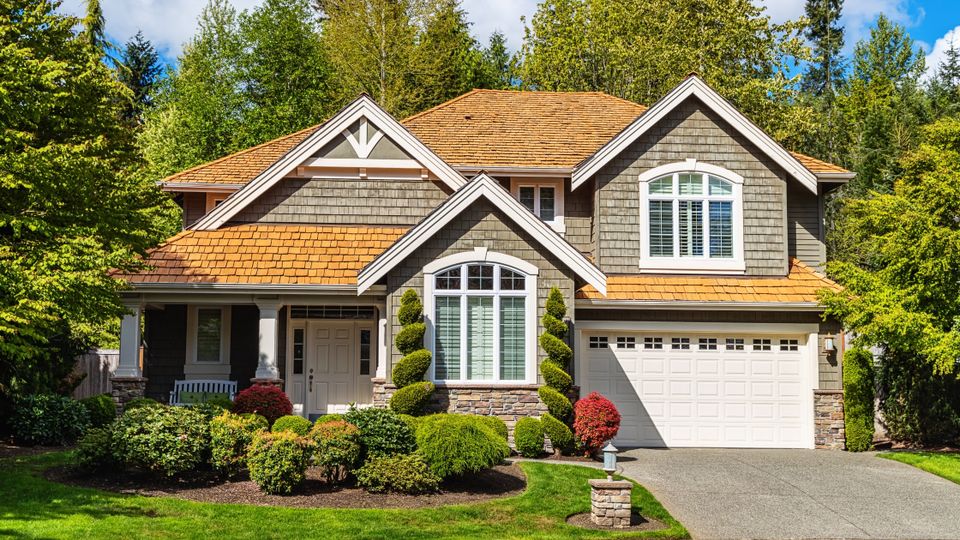
If you're aiming for a natural, rustic, or timeless look for your home, wood roofing materials like wood shingles and shake roofs are an excellent choice. These types of roofs are typically crafted from high-quality woods such as cedar or redwood, which not only enhance the aesthetic appeal of your home but also add a natural warmth and charm that other roofing materials can't replicate. Wood shingles are often favored for their classic appearance, blending seamlessly into homes with traditional or rustic designs.
Additionally, wood roofing may not be the best choice for homes located in areas prone to wildfires, as wood is a combustible material. However, modern treatments and fire-resistant coatings can help mitigate this risk. Keep this factor in mind when deciding if wood shingles are suitable for your region and climate.
By carefully weighing their benefits and upkeep requirements, you can determine if wood shingles are the right roofing material for your home.
Quick tip: Regular maintenance, like treating the wood to prevent moisture damage, can extend the life of wood shingles significantly.
Benefits of Wood Roofing
Wood roofing offers several advantages that make it an appealing option for homeowners:- Natural beauty and warmth: Wood shingles and shake roofs provide an organic, earthy appearance that’s difficult to achieve with other roofing materials. They age beautifully over time, developing a soft, weathered patina that adds character to your home.
- Insulation benefits: Wood is a natural insulator, helping to regulate indoor temperatures more effectively and improving your home's energy efficiency.
- Eco-friendly option: Many wood roofing materials can be sourced sustainably or made from recycled materials, such as reclaimed wood, reducing environmental impact.
Maintenance Requirements and Considerations
While wood shingles have undeniable charm, they do require more maintenance compared to metal roofs or asphalt shingles. It's essential to keep them clean and free from debris to prevent issues like mold, mildew, or rot. Regular inspections and treatments may be necessary to prolong their lifespan.Additionally, wood roofing may not be the best choice for homes located in areas prone to wildfires, as wood is a combustible material. However, modern treatments and fire-resistant coatings can help mitigate this risk. Keep this factor in mind when deciding if wood shingles are suitable for your region and climate.
When to Consider Wood Shingles
Wood shingles are perfect for homeowners who prioritize aesthetics and are willing to invest in the necessary maintenance. They are a popular choice for cottages, cabins, and homes in rural or forested areas, where their natural look complements the surrounding environment.By carefully weighing their benefits and upkeep requirements, you can determine if wood shingles are the right roofing material for your home.
Quick tip: Regular maintenance, like treating the wood to prevent moisture damage, can extend the life of wood shingles significantly.
6. Slate Roofing: Timeless Elegance and Longevity

When it comes to combining elegance, durability, and timeless appeal, slate roofing stands out as one of the best roofing materials available. This premium material has been used for centuries, offering unmatched aesthetic beauty and the ability to withstand the test of time. Whether you're building a luxury home or restoring a historic property, slate roofing brings an air of sophistication and reliability that few other roofing options can match.
By investing in slate roofing, you're choosing a material that combines elegance, strength, and a lifespan that can span generations. Whether you opt for natural slate or synthetic alternatives, this roofing option can elevate your home’s appearance while providing exceptional protection.
Benefits of Slate Roofing
Slate roofing is not just about looks—it’s also one of the most durable and dependable roofing materials on the market. Here are some of the key benefits that make slate an exceptional choice:- Exceptional Longevity: Slate roofs can last up to 100 years or more with proper installation and maintenance, far surpassing the lifespan of many other roofing types.
- Fire Resistance: Slate is naturally fire-resistant, making it an excellent choice for homeowners who prioritize safety.
- Weather Resistance: Slate roofing stands up to extreme weather conditions, including heavy rain, snow, and wind, without compromising its structural integrity.
- Aesthetic Appeal: With its natural stone finish, slate provides a classic, elegant look that enhances the beauty and value of any home. It is available in a variety of colors and textures, giving homeowners the flexibility to match their style preferences.
Considerations for Slate Roofing
While slate roofing offers numerous benefits, it’s important to note that it is one of the most expensive roofing materials on the market. The cost of slate includes not only the material itself but also the specialized labor required for its installation and maintenance. Slate is also heavier than other roofing materials, so your home may need additional structural support to handle the weight.Synthetic Slate Shingles: A Cost-Effective Alternative
For homeowners who love the look of slate but are concerned about the high cost, synthetic slate shingles provide an excellent alternative. These shingles are designed to mimic the appearance of natural slate while being lighter, more affordable, and easier to install. Synthetic slate shingles also offer good durability, often lasting several decades, and they can resist fire, wind, and weather effectively—though not to the same degree as real slate.Is Slate Roofing Right for You?
If your priorities include long-term durability, timeless style, and premium quality, slate roofing might be the perfect solution. However, due to its cost and weight, it’s important to consult with a roofing expert to ensure your home is structurally prepared for this material. If budget or structural concerns are an issue, synthetic slate shingles offer a compelling alternative that delivers the look you love at a fraction of the price.By investing in slate roofing, you're choosing a material that combines elegance, strength, and a lifespan that can span generations. Whether you opt for natural slate or synthetic alternatives, this roofing option can elevate your home’s appearance while providing exceptional protection.
7. Flat Roofs (EPDM, PVC, and Built-Up Roofing)
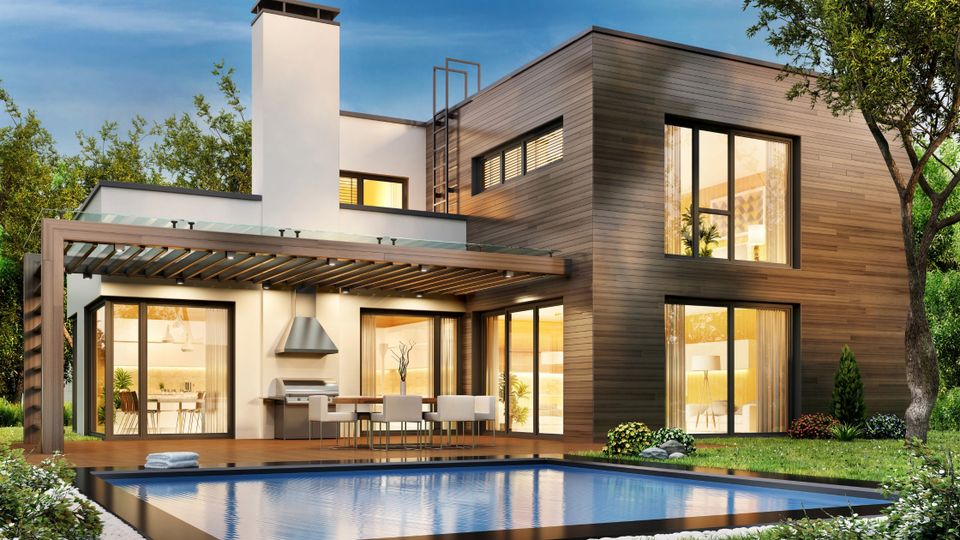
Flat roofs are an efficient and cost-effective roofing option, commonly used for modern homes, low-slope structures, and commercial buildings. They have gained popularity due to their practicality, affordability, and modern aesthetic. Flat roof systems use materials like EPDM roofing (ethylene propylene diene monomer), PVC roofing (polyvinyl chloride), and built-up roofing (BUR), all of which are designed to provide durability, weather resistance, and low maintenance requirements.
Whether you’re building a new home, renovating a commercial property, or looking to install solar panels or a green roof, flat roofs offer an efficient, modern, and sustainable roofing option.
Materials Used in Flat Roofs
- EPDM Roofing: A synthetic rubber material that is highly durable, weather-resistant, and offers excellent insulation. It is lightweight and easy to install, making it a popular choice for both residential and commercial properties.
- PVC Roofing: Known for its strength and resistance to moisture, chemical exposure, and fire. PVC roofs are an excellent option for buildings in areas with harsh weather conditions.
- Built-Up Roofing (BUR): Made from alternating layers of bitumen and reinforcing fabrics, BUR provides a multi-layered, waterproof barrier that is both sturdy and long-lasting.
Benefits of Flat Roofs
- Affordability: Flat roofs are generally more affordable to install and maintain compared to pitched roofs, as they require fewer materials and less labor.
- Solar Panel Compatibility: Flat roofs offer the perfect surface for installing solar panels, maximizing energy efficiency for homes and businesses.
- Green Roof Potential: They are ideal for green roofing systems, allowing homeowners and businesses to grow plants or create rooftop gardens that improve insulation and reduce heat absorption.
- Modern Aesthetic: For homeowners seeking a minimalist or industrial look, flat roofs provide a sleek, contemporary design.
- Space Utilization: A flat roof can serve as a functional space for outdoor living areas, HVAC equipment, or storage.
Why Choose Flat Roofs?
Flat roofs are particularly well-suited for industrial buildings, commercial spaces, and contemporary-style homes. Their versatility and functionality make them a popular roofing material for structures with low-slope or no-slope designs. With options like EPDM, PVC, and built-up roofing, you can tailor your flat roof to meet your specific needs while achieving a cost-effective and durable solution.Whether you’re building a new home, renovating a commercial property, or looking to install solar panels or a green roof, flat roofs offer an efficient, modern, and sustainable roofing option.
8. Membrane Roofing: A Durable Solution for Low-Slope Roofs
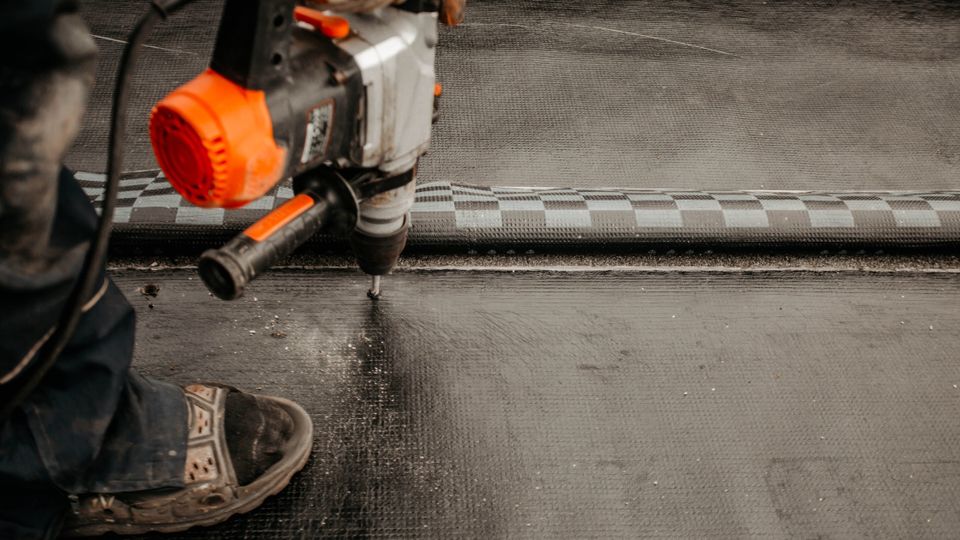
Membrane roofing is a popular choice for structures with low-slope or flat roofs due to its lightweight design and durability. Widely used in both residential and commercial properties, membrane roofing systems such as TPO (Thermoplastic Polyolefin) and EPDM (Ethylene Propylene Diene Monomer) are engineered to withstand various environmental challenges. These roofing systems are often preferred for their cost-effectiveness and long-lasting performance.
By considering membrane roofing systems for your flat or low-slope roof, you can achieve a balance of durability, cost-effectiveness, and ease of maintenance, ensuring your property is well-protected for years to come.
Key Benefits of Membrane Roofing
- Water Resistance: Membrane roofing provides excellent resistance to water infiltration, making it ideal for low-slope roofs where water runoff can be slower. Its seamless or well-sealed design greatly reduces the risk of leaks.
- UV Protection: These roofing materials are designed to withstand prolonged exposure to sunlight, helping to prevent damage from UV rays. TPO, in particular, reflects sunlight, making it energy-efficient by reducing heat absorption.
- Ease of Repair: Membrane roofs are relatively easy to maintain and repair. Minor damage can often be addressed with patching, which is simpler and more cost-effective compared to other roofing types.
- Versatility: Membrane roofing systems perform exceptionally well on flat or low-slope roofing structures, providing reliable protection against weather elements while maintaining their structural integrity.
When to Upgrade Your Membrane Roofing System
For areas prone to extreme weather conditions or temperature fluctuations, upgrading your membrane roofing system might be worth considering. Investing in higher-grade materials, such as thicker TPO membranes or reinforced EPDM, can enhance durability and performance. These upgrades can help minimize wear and tear caused by heavy rainfall, high winds, or freezing temperatures, extending the lifespan of your roof and reducing long-term maintenance costs.Ideal Applications for Membrane Roofing
Membrane roofing is an excellent option for a wide range of building types, including warehouses, schools, retail spaces, and modern residential homes. Its lightweight nature puts less strain on the roof structure, while its durability ensures long-term protection. For environmentally conscious projects, TPO roofing can also contribute to improved energy efficiency by reflecting sunlight and reducing cooling costs.By considering membrane roofing systems for your flat or low-slope roof, you can achieve a balance of durability, cost-effectiveness, and ease of maintenance, ensuring your property is well-protected for years to come.
FAQs About Roofing Materials
What is the most common roofing material?
Traditional asphalt shingles are the most common roofing material in North America, thanks to their affordability and versatility.
Are metal roofs energy efficient?
Yes! Metal roofs reflect heat, reducing cooling costs in the summer and keeping homes warm in the winter.
How do I maintain clay tiles?
Regular cleaning and inspections can prevent cracks and buildup, ensuring your clay tiles last for decades.
Can roofing materials affect home insulation?
Absolutely. Materials like clay tiles and slate tiles provide natural thermal insulation, reducing energy costs.
What are eco-friendly roofing options?
Consider solar panels, green roofs, or roofs made from recycled materials, like recycled plastic or rubber.
Traditional asphalt shingles are the most common roofing material in North America, thanks to their affordability and versatility.
Are metal roofs energy efficient?
Yes! Metal roofs reflect heat, reducing cooling costs in the summer and keeping homes warm in the winter.
How do I maintain clay tiles?
Regular cleaning and inspections can prevent cracks and buildup, ensuring your clay tiles last for decades.
Can roofing materials affect home insulation?
Absolutely. Materials like clay tiles and slate tiles provide natural thermal insulation, reducing energy costs.
What are eco-friendly roofing options?
Consider solar panels, green roofs, or roofs made from recycled materials, like recycled plastic or rubber.
Enhance Your Roof’s Curb Appeal
Still wondering which roofing material to choose? Take a closer look at how the right roofing material options can maximize your home’s style and function. For more inspiration, read about Choosing Roof Colors to Boost Curb Appeal.
Whether you’re looking for types of roofing that can withstand harsh weather conditions or uniquely stylish options, a roofing company can help you create a roofing system tailored to your needs.
For more tips and trends, check out Modern Roofing Trends for a Stylish Home.
Whether you’re looking for types of roofing that can withstand harsh weather conditions or uniquely stylish options, a roofing company can help you create a roofing system tailored to your needs.
For more tips and trends, check out Modern Roofing Trends for a Stylish Home.
